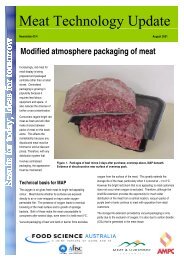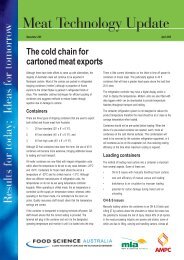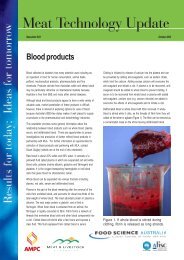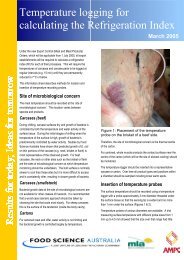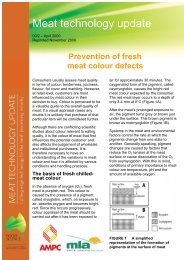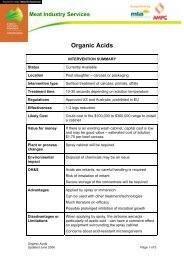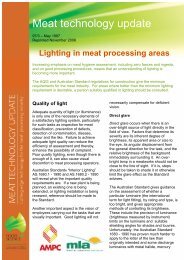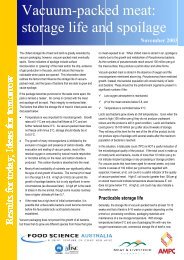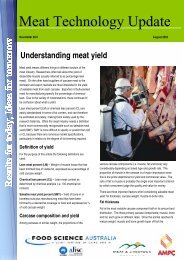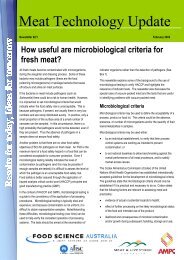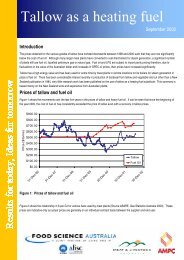Tenderstretch - March 1998 - Red Meat Innovation
Tenderstretch - March 1998 - Red Meat Innovation
Tenderstretch - March 1998 - Red Meat Innovation
Create successful ePaper yourself
Turn your PDF publications into a flip-book with our unique Google optimized e-Paper software.
cooling rate), the position of the carcases inthe chillers, and the temperatures in thechillers, are eliminated by the use of ES. Allof these factors would otherwise affect thechilling rate, cause shortening of manyexpensive cuts and, therefore, affect theirtenderness.Electrical stimulation is available to achieve apH and temperature relationship within theMSA window for various rates of chilling.<strong>Tenderstretch</strong>In this method, many of the valuable musclesof a carcase are restrained and preventedfrom cold shortening during the rigor processby changing the suspension point of the sidefrom the achilles tendon to the sacrosciaticligament (the thick ligament around theanus), or to the eye of the aitchbone(obturator foramen). For whole carcases,suspension is from the pelvic girdle.This process leads to a tendernessimprovement in most of the commerciallyimportant primal cuts, e.g. rump, thick flank,topside, silverside, striploin and cube roll, butnot the blade.All dressing procedures are carried outnormally on the carcase suspended from theachilles tendon. Transfer of the beef sidesuspension point to the ligament oraitchbone can be carried out at any pointproviding it is done within one-and-a-halfhours of sticking. The equipment required forFigure 1: Transfer procedure; Achilles tendon to aitchbone2



